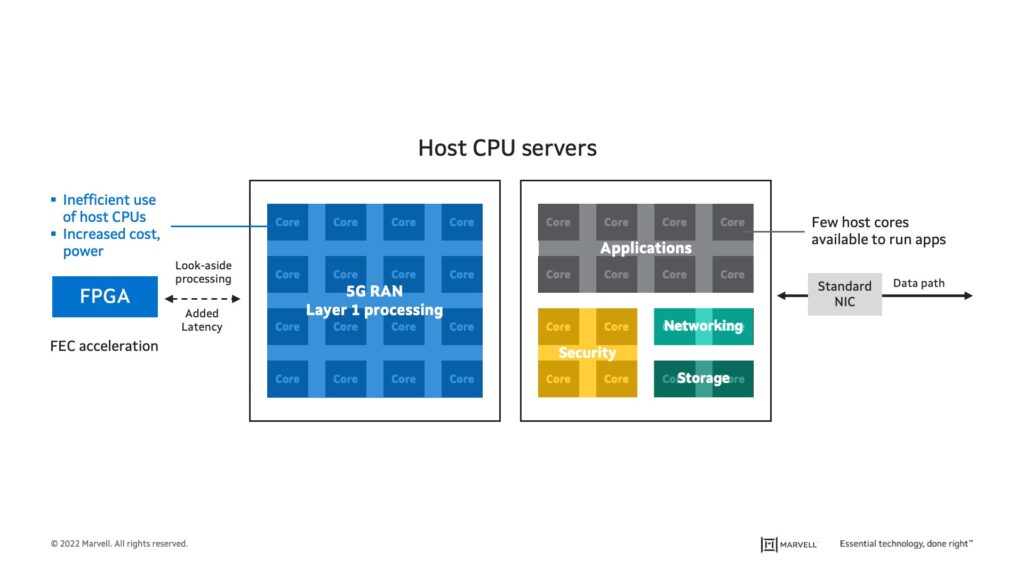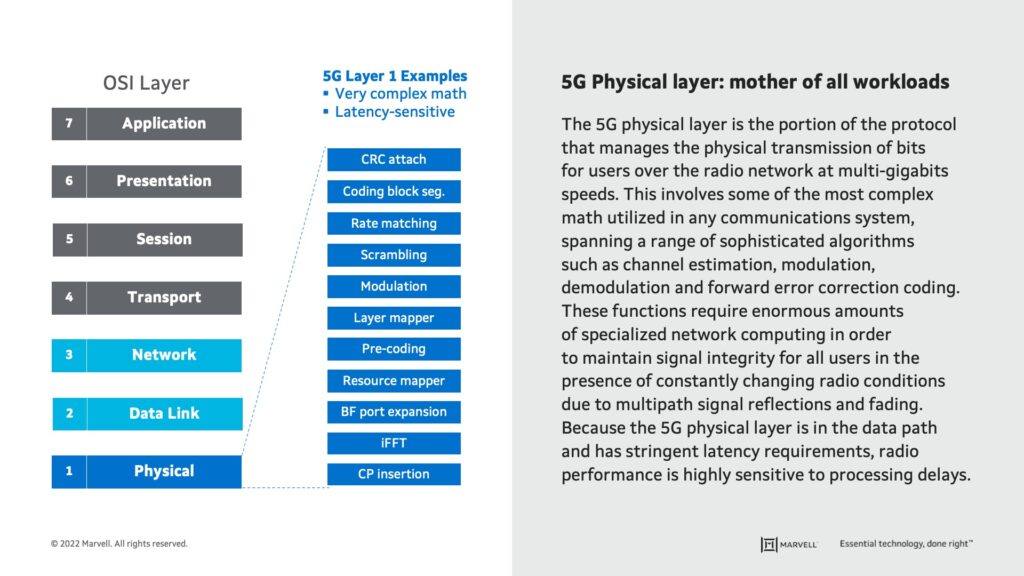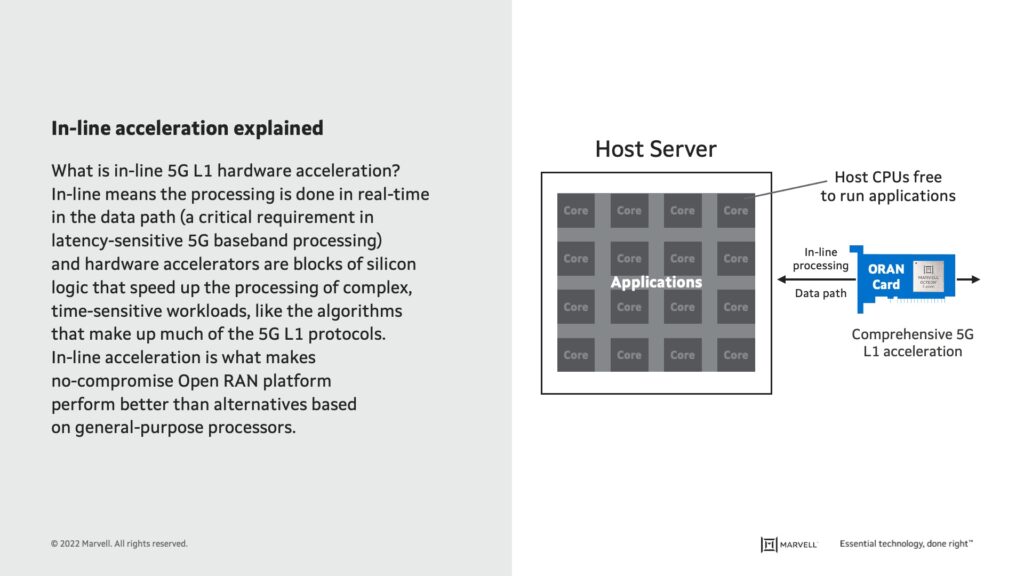- PRODUCTS
- COMPANY
- SUPPORT
- PRODUCTS
- BY TYPE
- BY MARKET
- COMPANY
- SUPPORT
No-Compromise 5G Open RAN: Compute Architecture
Introduction
5G networks are evolving to a cloud-native architecture with Open RAN at the center. This explainer series is aimed at de-mystifying the challenges and complexity in scaling these emerging open and virtualized radio access networks. Let’s start with the compute architecture.
The Problem
Open RAN systems based on legacy compute architectures utilize an excessively high number of CPU cores and energy to support 5G Layer 1 (L1) and other data-centric processing, like security, networking and storage virtualization. As illustrated in the diagram below, this leaves very few host compute resources available for the tasks the server was originally designed to support. These systems typically offload a small subset of 5G L1 functions, such as forward error correction (FEC), from the host to an external FPGA-based accelerator but execute the processing offline. This kind of look-aside (offline) processing of time-critical L1 functions outside the data path adds latency that degrades system performance.
Image: Limitations of Open RAN systems based on general purpose processors
History Lesson
Creating a cloud-native 5G RAN requires much more than combining cloud servers and 5G L1 software running on general purpose CPUs. It requires a new approach that optimizes how and where each layer of the 5G protocol stack is processed and interfaces to the host server and the network. Cloud hyperscalers used similar optimization principles to address the challenges of networking, security and storage virtualization. The hyperscalers led the way in adoption of SmartNICs, which offloads these data-centric workloads to a Data Processing Unit (DPU) with in-line, hardware accelerators. In-line simply means in the data path and hardware accelerators speed up the processing. The need and techniques for 5G L1 offload are similar.
Image: Complexity of data network processing in 5G RAN compute for Layer 1 Functions
The No-Compromise Approach
A no-compromise approach to Open RAN virtualization requires a comprehensive set of 5G L1 functions to be offloaded from the host server and accelerated inline in order to enhance RAN virtualization performance, power- and cost-efficiency, just as SmartNICs have done for networking, security and storage virtualization. This is an important lesson for the Open RAN ecosystem, as the challenges of 5G virtualization and vendor diversification are not very different – only much harder. In this context, one can think of Marvell’s Open RAN Accelerator platform as an Open RAN NIC (network interface card).
Image: Illustration of No-Compromise 5G Open RAN Accelerator Platform
Marvell is working closely with a growing number of customers and partners across the cloud and carrier ecosystems to bring no-compromise 5G Open RAN to market later this year. Marvell’s unique architecture helps to diversify and strengthen the 5G Open RAN ecosystem by combining best-in-class hardware with best-in-class L1 software from different vendors in a fully open, standards-based platform that can be easily integrated into the PCIe (peripheral component interconnect express) slot of any x86 or Arm based host server in a carrier or cloud data center.
Tags: 5G L1 functions, 5G L1 offload, 5g Networks, 5G Open RAN Accelerator, 5G RAN, 5G virtualization, data-centric processing, open ran, Open RAN virtualization, RAN virtualization Open RAN ecosystem, SmartNICs hardware accelerators
Recent Posts
Archives
Categories
- 5G (12)
- AI (26)
- (26)
- Cloud (14)
- Coherent DSP (8)
- Company News (101)
- Custom Silicon Solutions (6)
- Data Center (48)
- Data Processing Units (22)
- Enterprise (25)
- ESG (6)
- Ethernet Adapters and Controllers (12)
- Ethernet PHYs (4)
- Ethernet Switching (39)
- Fibre Channel (10)
- Marvell Government Solutions (2)
- Networking (34)
- Optical Modules (13)
- Security (6)
- Server Connectivity (25)
- SSD Controllers (6)
- Storage (22)
- Storage Accelerators (2)
- What Makes Marvell (38)
Copyright © 2025 Marvell, All rights reserved.
- Terms of Use
- Privacy Policy
- Contact

